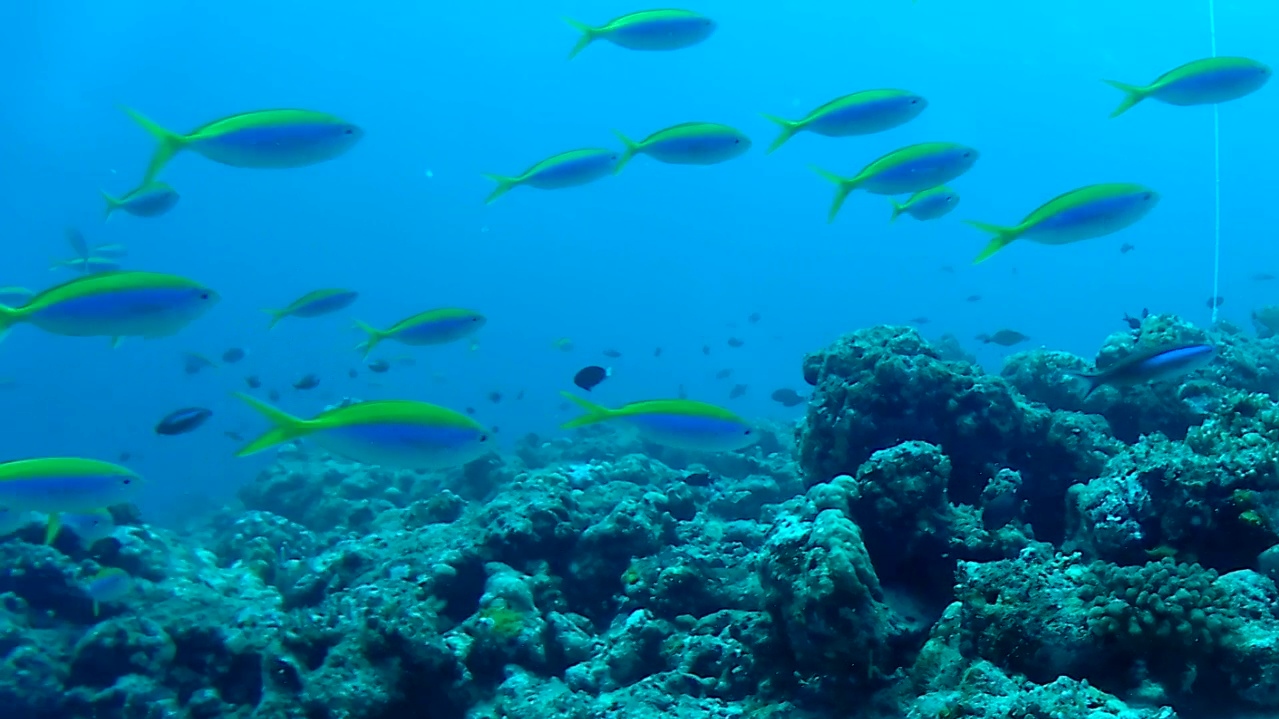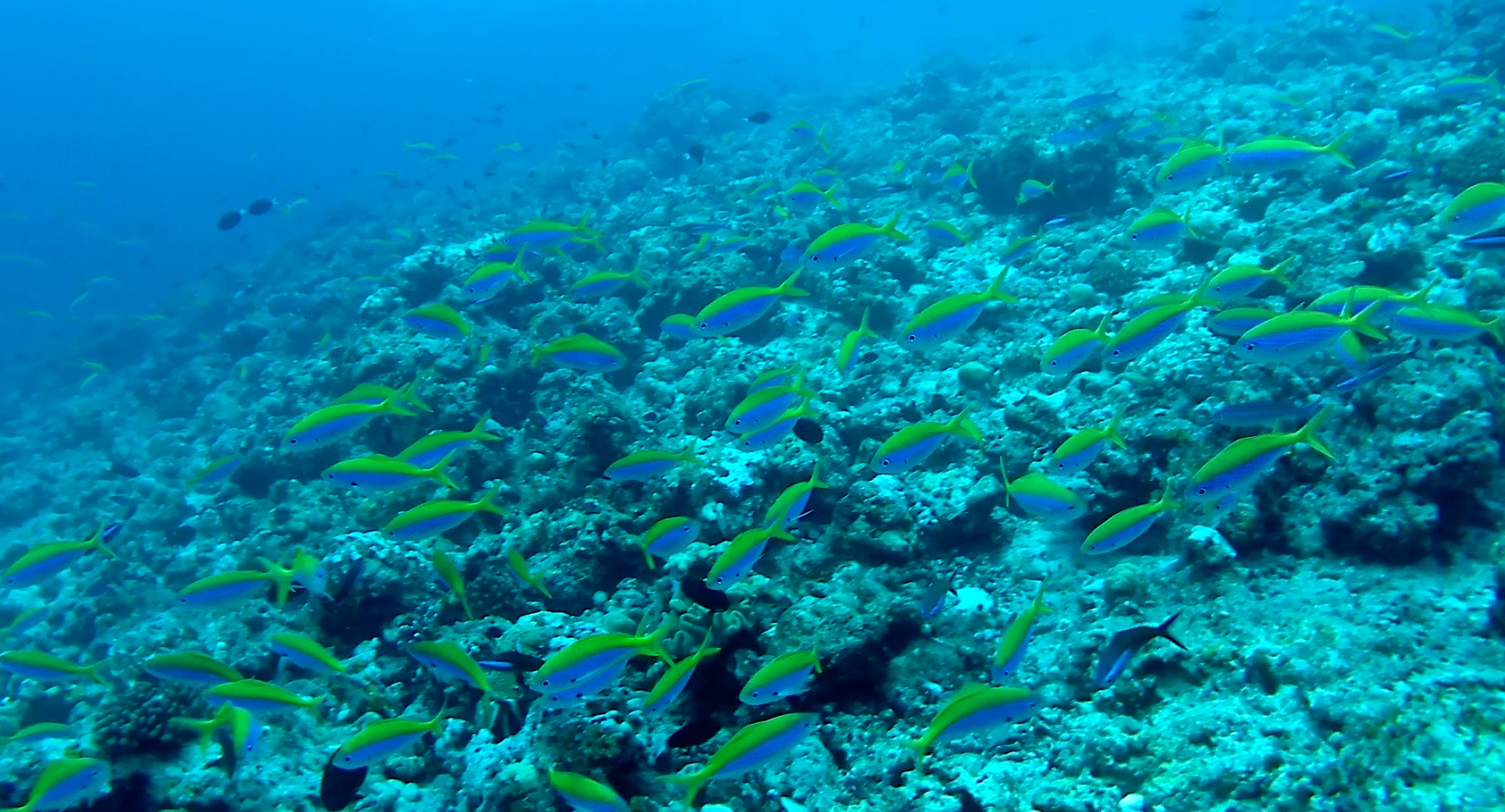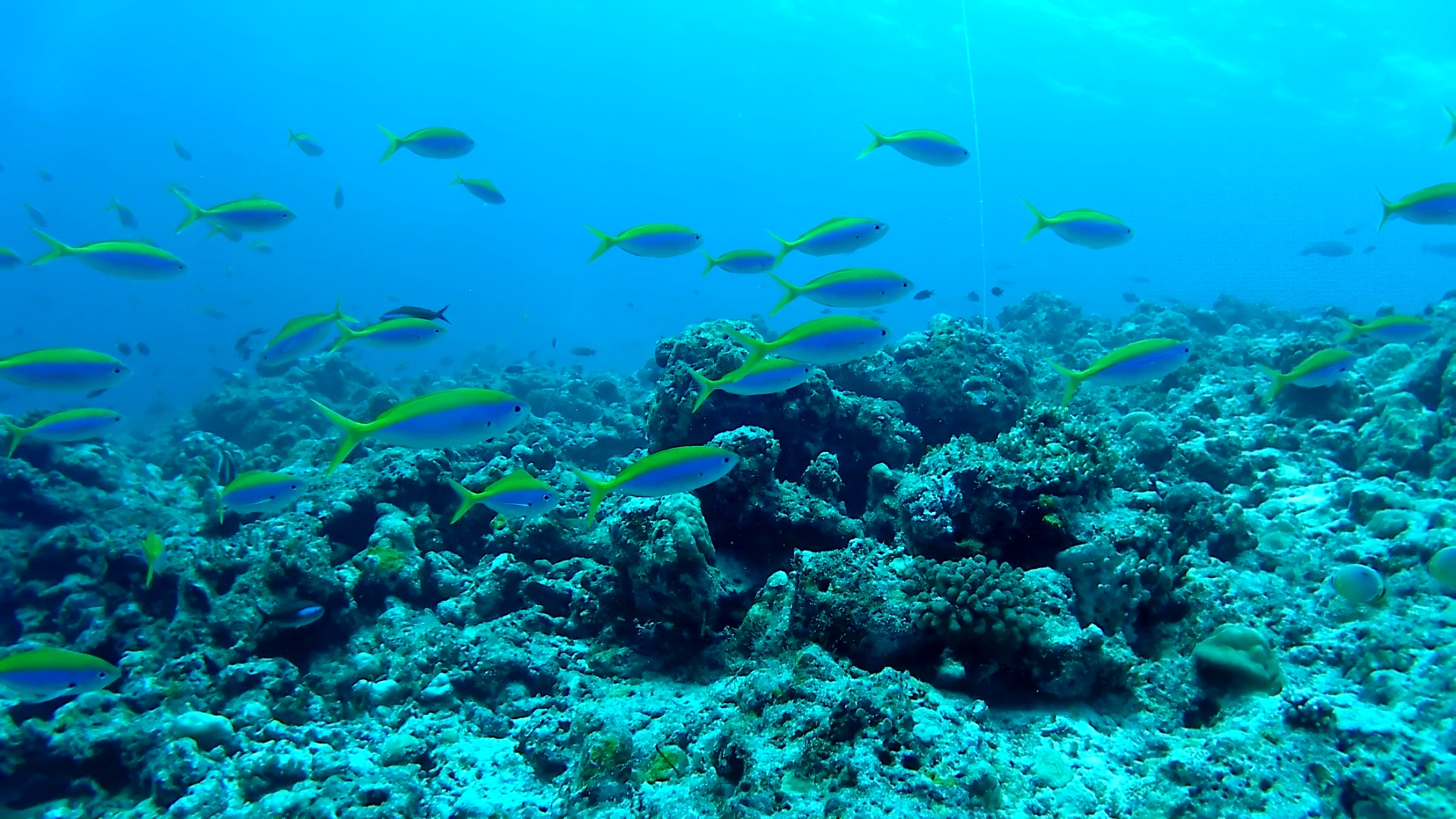Pesce Fuciliere Pinna Gialla - Caesio xanthonota
Pesce Fuciliere Pinna Gialla Yellowback Fusilier intotheblue.it

The Yellowback Fusilier beloning to the family casionidae, is a small to medium-sized fish which grows to about 40 cm. The mouth is small and terminal and is protusible, being able to be extended forward to swallow food. The body is fusiform or spindle-shaped. The dorsal fin has 10 spines and 14-15 soft rays. The anal fin has three spines and 11 or 12 soft rays. The caudal fin is deeply forked. Pesce Fuciliere Pinna Gialla Yellowback Fusilier intotheblue.it
The body coloration is greyish blue with a bright yellow zone on the back. The yellow area goes from the forehead, between the eyes, to the tail, and includes the dorsal fin and thecaudal fin. This area corresponds more or less to the upper third of the body. The belly is plain white
Caesio xanthonota is widely distributed throughout the tropical waters of the Indian Ocean and in the western Pacific Ocean. It lives in mid-water in deep lagoons and close to external reefs from the surface to 50 m deep.
intotheblue.it
(extract from Wikipedia)


The coral reef is an underwater ecosystem characterized by reef-building corals. Reefs are formed of colonies of coral polyps held together by calcium carbonate. Most coral reefs are built from stony corals, whose polyps cluster in groups.
Coral belongs to the class Anthozoa the animal phylum Cnidaria, which includes sea anemones and jellyfish. Unlike sea anemones, corals secrete hard carbonate exoskeletons that support and protect the coral. Most reefs grow best in warm, shallow, clear, sunny and agitated water. Coral reefs first appeared 485 million years ago, at the dawn of the Early Ordovician, displacing the microbial and sponge reefs of the Cambrian.
Sometimes called rainforests of the sea, shallow coral reefs form some of Earth’s most diverse ecosystems. They occupy less than 0.1% of the world’s ocean area, about half the area of France, yet they provide a home for at least 25% of all marine species, including fish, mollusks, worms,echinoderms, sponges, tunicates and other cnidarians.
Coral reefs flourish in ocean waters that provide few nutrients. They are most commonly found at shallow depths in tropical waters, but deep water and cold water coral reefs exist on smaller scales in other areas.
https://www.intotheblue.it/2022/01/11/yellowback-fusilier/
https://www.intotheblue.it/2018/07/16/pesci-fuciliere-pinna-gialla/
